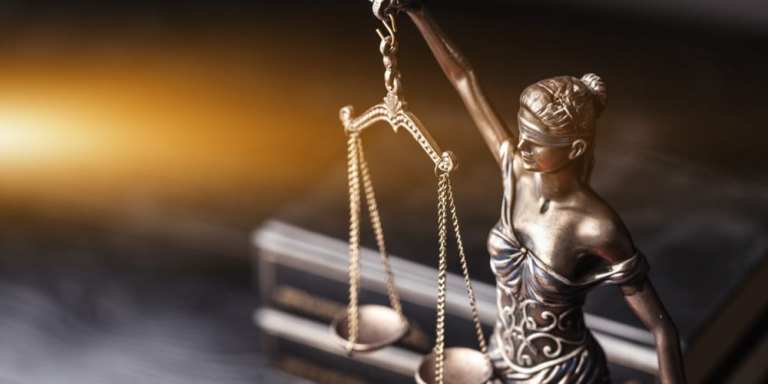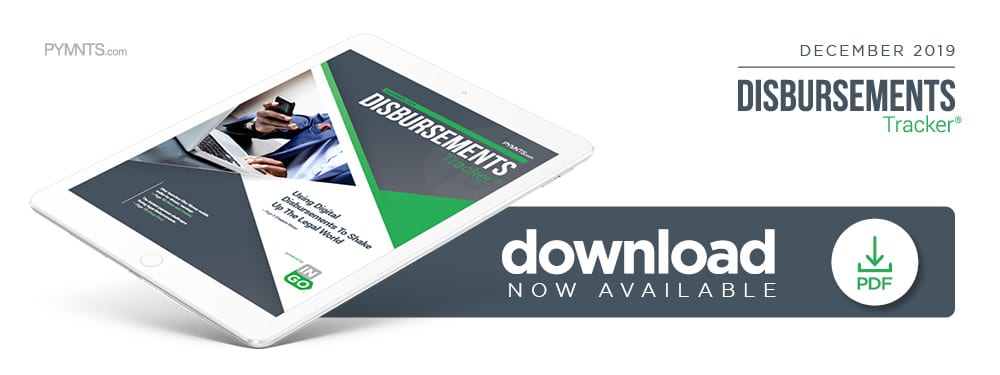Using Digital Disbursements To Shake Up The Legal World

Plaintiffs can sometimes wait years for legal settlements to be decided, then even longer for the paper check to arrive in the mail. That’s despite the availability and security offered by digital disbursement tools. In the latest Disbursements Tracker, PYMNTS spoke with Joshua Browder, founder and CEO of mobile settlement app DoNotPay, on law firms’ affinity for legacy methods, and what it will take for the legal world to embrace digital disbursements.
Digital disbursements have become popular for retail rebates, refunds and similar payments, but other industries have approached them more cautiously. Retailers and other customer-facing platforms adapted alongside the internet to offer these payment innovations, but legal firms still view many of these methods with trepidation.
Legal disbursements are tricky, even for the simplest of payouts, because they need full verification before going to potential claimants. Thus, firms need to verify the amounts, claimants and corporations involved before sending funds — a time-consuming process that irritates customers. Consumers who are well-versed in digital transactions may grow frustrated with such claims experiences, especially given the legal process questions they might have about filing and collecting claims in the first place.
Digital disbursements may not yet be fully viable for many firms, but the process has advocates. Consumers are likely unfamiliar with legal systems and payment processes, but apps such as DoNotPay, developed by Founder and CEO Joshua Browder, are attempting to simplify their experiences. Browder explained in a recent interview with PYMNTS that the app allows consumers to file claims and suits against corporations like CenturyLink, Comcast and Verizon, as well as obtain digital disbursements from such companies.
“We like to call it a robot lawyer,” Browder said. “[DoNotPay] is a chatbot that actually speaks to consumers automatically, gets details from them and uses all of those details to formulate a case, which is submitted either to the company or the government to get them the settlement money [or] refund.”
The company is expanding its in-app legal tools to include settlements, and will offer ACH payments to all users by the end of January 2020, he added.
Digital disbursements have consumer advantages, but compliance and data security challenges may disincentivize legal firms from following DoNotPay’s lead. Breaches give consumers pause when they consider sharing their information, and legal firms look to create more secure avenues for the user details kept on file for claims.
Fraud, Security Issues Cause Firms To Cling To Checks
The use cases for DoNotPay are relatively simple. Consumers bring their potential legal issues to the app before creating their profiles. Some may concern larger corporations, such as Uber and Verizon (contested bills or unpaid wages, for example), or consumers can dispute parking tickets, subscription payments and other corporate bills. Users can also link their information to the app to see if the “robot lawyer” can find funds they might be owed.
“[DoNotPay] can actually find you use cases [that] you didn’t even know [about], and it will find you fees you didn’t even know about that can be refunded,” Browder said. “The biggest example of that is bank fees. You can connect your bank accounts, and [the app] will look at all of the overdraft fees so you can get the money back.”
The app — available in Australia, the U.K and the U.S. — charges a $3 fee per claim or a $3 monthly fee for subscribers, of which it has approximately 10,000.
Disbursements are handled digitally, and in the case of suits against corporations where consumers already have relationships, they will revert back to the cards that customers have on file, Browder explained. This process is the same for banks. DoNotPay plans to offer in-app ACH transfers, too — something with which it is already experimenting.
This payments innovation comes only a few years after the company’s 2015 founding, when it offered consumers the option for faster claims processes without touching involved funds. Legal firms must approach payments innovation in a slightly different light, however, and checks are simply an accepted, invisible part of the disbursements process for many, Browder noted.
“Class-action administrators have an arms-length relationship with the consumer,” he said. “They don’t even know who these people are, [so] they’re just representing them in theory. … [Specific processes are] not explicitly mentioned, [but] it seems like a legal precedent to send checks in a lot of situations. I think people issue checks to comply with how it’s always been.”
Checks are not safer than digital disbursements, but are much more familiar to legal firms, which already know how to process checks, verify recipients’ identities and tie such payments into legal processes. Digital payments are relatively unknown by contrast, but — if done right — inherently provide strong account-ownership verification controls and a better customer experience, making them superior to paper checks.
Legal firms may be running out of options, however. Consumers are no longer very forgiving of check disbursements, even for infrequent instances, like legal settlements. The check process irritates class-action suit members who have been waiting years to receive nominal amounts of money, but involved firms must be convinced of digital disbursements’ relative security if they are going to shift practices.
The Data Question
Digital disbursements have their own flaws — though none are as prevalent as those of checks. After all, online payouts are still not safe from fraudsters, who can make moves with millions of stolen customer credentials. Legal firms may, thus, be reticent to add their disbursements into this landscape.
Consumers do not seem to share these concerns, however, despite some wariness following larger data breaches in 2018 and the first half of 2019. Browder noted that they seem even more willing to give up personal information online than they have in the past.
“I think that we’re very lucky to be in this era, where consumers are actually comfortable connecting their bank accounts,” he explained. “I think the reason for that is that apps like Venmo have piloted a way of doing it, … and people are comfortable sharing details that they never would have [shared] five years ago.”
This can differ by market, Browder admitted, noting that U.K. customers are somewhat more data-shy than U.S. residents, but he expects that to change as disbursements and transactions become more digital.
Legal firms may not be able to follow DoNotPay’s method of dealing with disbursement frustrations online, but they will soon be pushed to innovate within the space. These firms must rectify their digital payment method security concerns to send near-instant funds, or risk frustrating their end customers.
